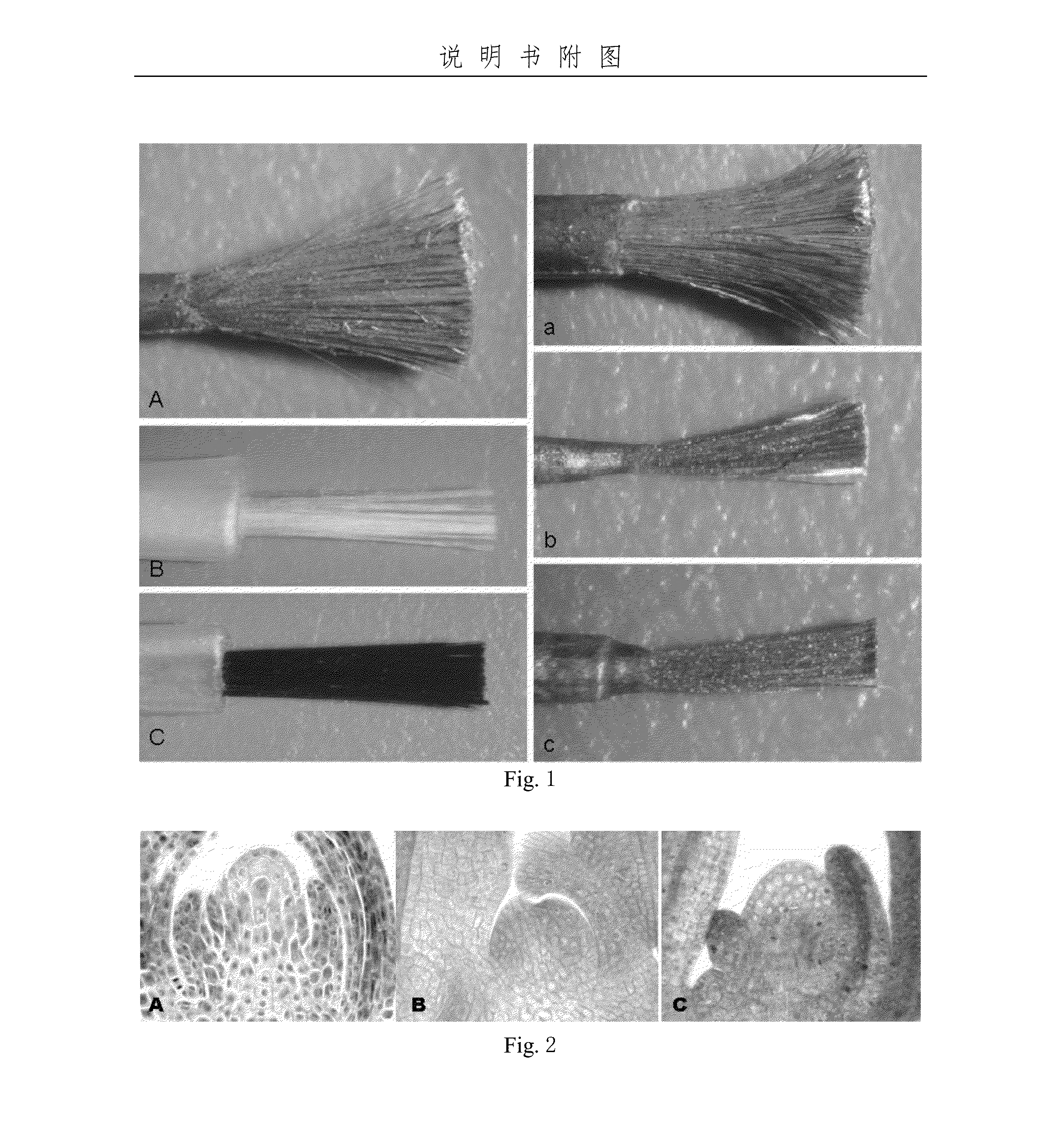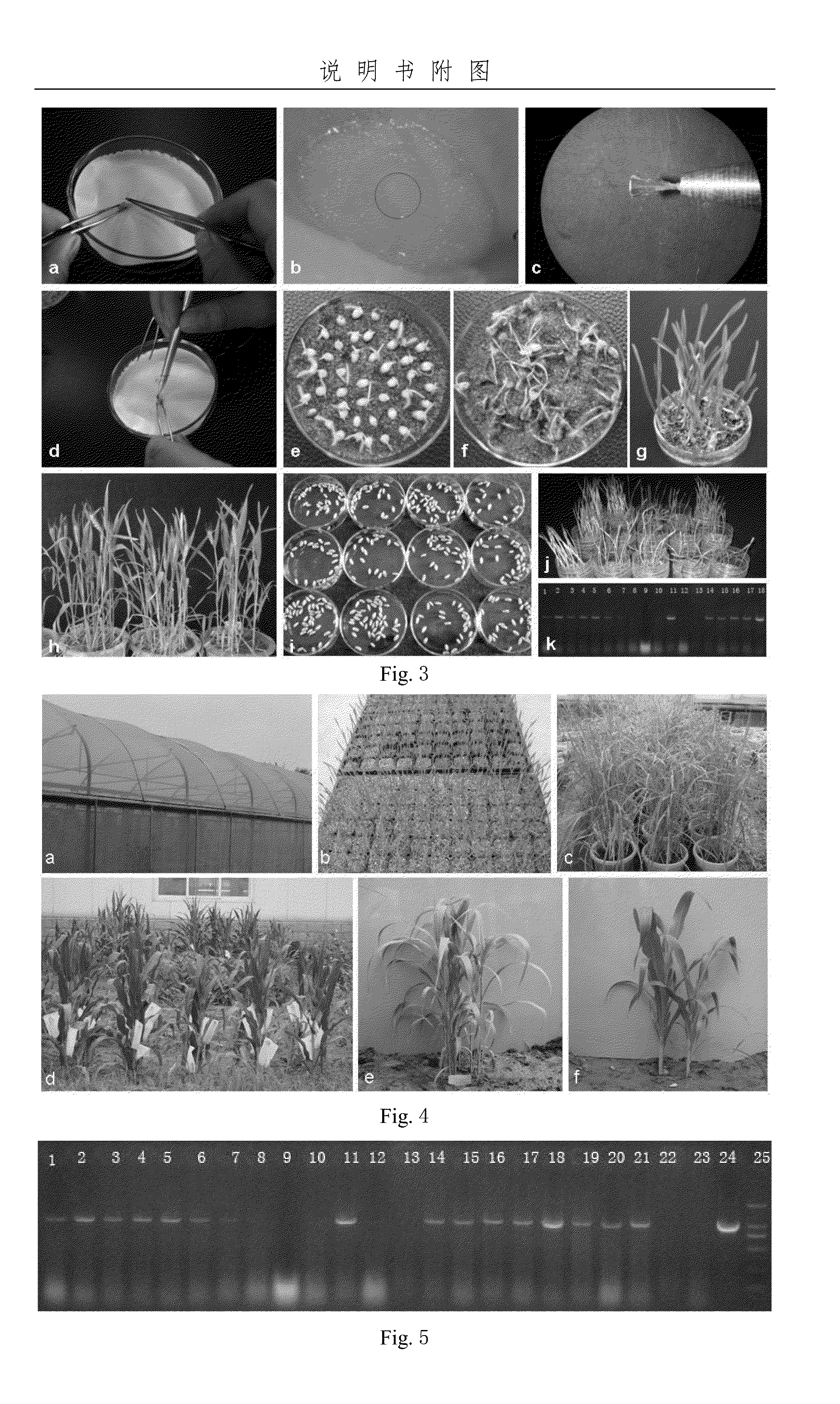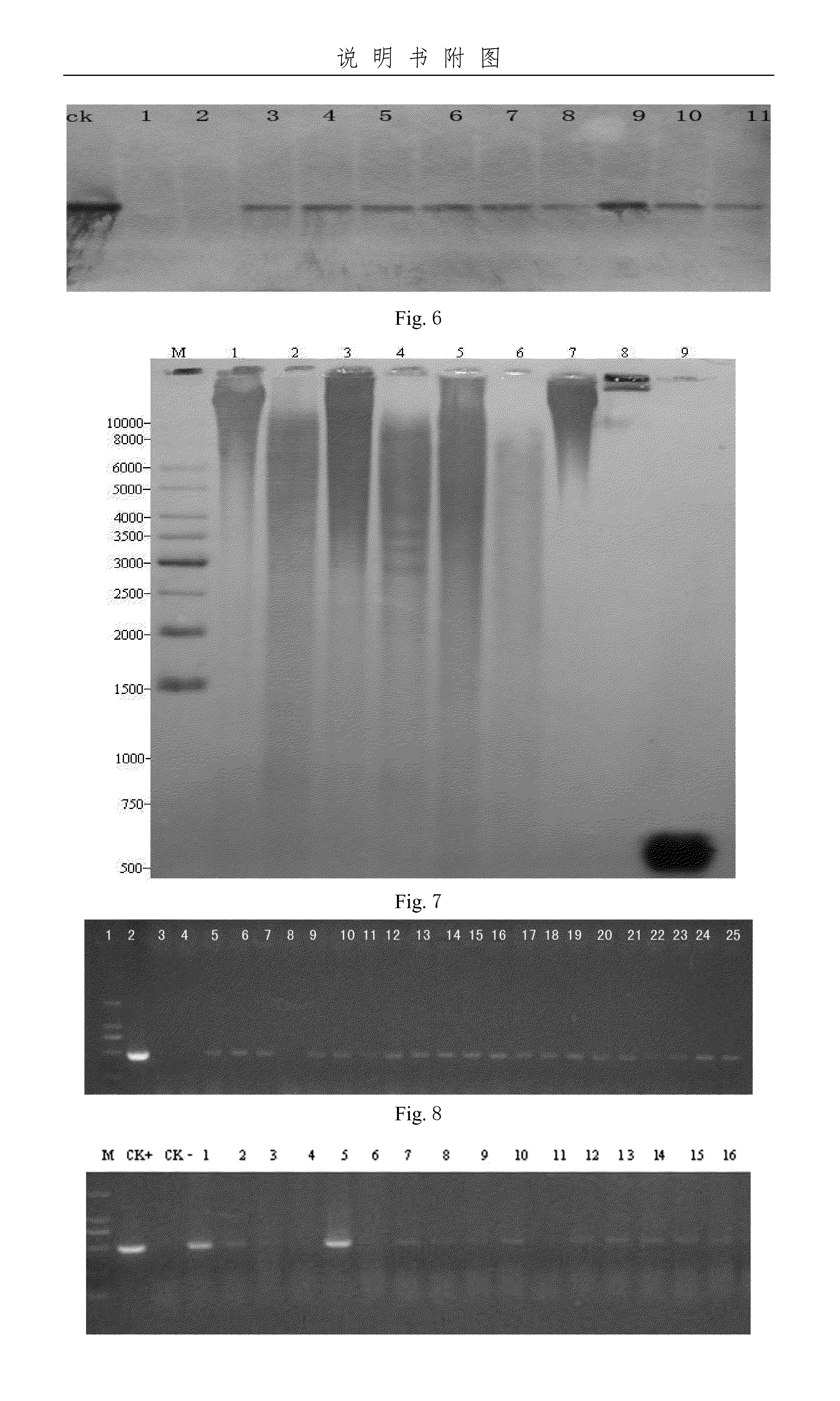Monocotyledon transgenic method for invading growing points of seed buds minimally and fully
a monocotyledon and transgenic technology, applied in the field of monocotyledon transgenic method for invading growing points of seed buds, can solve the problems of poor repeatability, low efficiency, serious restrictions in the development and application of this method, etc., and achieves the effects of high transformation efficiency, easy to perform, and limited genotypes
- Summary
- Abstract
- Description
- Claims
- Application Information
AI Technical Summary
Benefits of technology
Problems solved by technology
Method used
Image
Examples
embodiment 1
[0059]The transformation for apical meristem of winter wheat using the SMW brush
[0060](1) Materials and Methods
[0061]Wheat cultivar: Shi 4185.
[0062]A. tumefaciens strain: EHA105.
[0063]The exogenous genes: gus gene and npt-II gene, constructed in vector pCAMBIA2201.
[0064]Single colony of A. tumefaciens was screened and inoculated into 50 mL of LB medium containing 50 mg / L kanamycin and 40 mg / L rifampicin, and grew to OD600=0.6 at 28° C. on shaker with 220 rpm. The A. tumefaciens infection solution was obtained by centrifugating the culture at 4000 rpm for 5 min and re-suspended in the base buffer (1 / 2 volume of the original) containing 1 / 10 MS medium complemented with 100 μM AS, 100 mg / L F68, 400 mg / L MES, 10 g / L glucose and 40 g / L maltose, pH 5.6.
[0065]90 full and healthy seeds were soaked in water at 25 ° C. for 7 hours and sterilized routinely. The seeds were rinsed several times with sterilized water and placed in the autoclaved Petri dish (Φ9 cm) with two layers of absorbent tis...
embodiment 2
The Transformation for Apical Meristem of Different Genotypes of Wheat Using SMW Brush
[0070](1) Materials and Methods
[0071]Wheat cultivars: Jinhe 9123, Chinese Spring, and Bobwhite.
[0072]A. tumefaciens strain: C58C1.
[0073]The exogenous genes: gus gene and npt-II gene, constructed in vector pCAMBIA2201.
[0074]Single colony of A. tumefaciens was screened and inoculated into 50 mL of LB medium containing 50 mg / L kanamycin and 40 mg / L rifampicin, and grew to OD600=0.5 at 28° C. on shaker with 220 rpm. The A. tumefaciens infection solution was obtained by centrifugating the culture at 4000 rpm for 5 min and re-suspended in the base buffer (1 / 5 volume of the original) containing 1 / 10 MS medium complemented with 100 μM AS, 100 mg / L F68, 400 mg / L MES, 10 g / L glucose and 40 g / L maltose, pH 5.6.
[0075]The full and complete seeds of three cultivars were soaked in water at 25° C. for 10 hours and sterilized routinely. The sterilized seeds were rinsed several times with sterilized water and placed...
embodiment 3
The Transformation for Apical Meristem of Rice Using the SMW Brush
[0083](1) Materials and Methods
[0084]Rice cultivar: LongDao 10.
[0085]A. tumefaciens strain: EHA105.
[0086]The exogenous genes: gus gene and bar gene, constructed in vector pCAMBIA3301.
[0087]Single colony of A. tumefaciens was screened and inoculated into 50 mL of LB medium containing 50 mg / L kanamycin and 40 mg / L rifampicin, and grew to OD600=0.6 at 28° C. on shaker with 220 rpm. The A. tumefaciens infection solution was obtained by centrifugating the culture at 4000 rpm for 5 min and re-suspended in the base buffer (1 / 2 volume of the original) containing 1 / 10 MS medium with 100 μM AS, 100 mg / L F68, 400 mg / L MES, 10 g / L glucose and 40 g / L maltose, pH 5.6.
[0088]120 full and complete seeds were screened and the hull was removed. The grains were sterilized routinely and placed on two layers of absorbent tissue in the Petri dish (Φ9 cm) containing 8 mL of sterilized water at 28° C. in dark for 1.5 days. 117 of them germina...
PUM
| Property | Measurement | Unit |
|---|---|---|
| Temperature | aaaaa | aaaaa |
| Temperature | aaaaa | aaaaa |
| Temperature | aaaaa | aaaaa |
Abstract
Description
Claims
Application Information
 Login to View More
Login to View More - R&D
- Intellectual Property
- Life Sciences
- Materials
- Tech Scout
- Unparalleled Data Quality
- Higher Quality Content
- 60% Fewer Hallucinations
Browse by: Latest US Patents, China's latest patents, Technical Efficacy Thesaurus, Application Domain, Technology Topic, Popular Technical Reports.
© 2025 PatSnap. All rights reserved.Legal|Privacy policy|Modern Slavery Act Transparency Statement|Sitemap|About US| Contact US: help@patsnap.com



